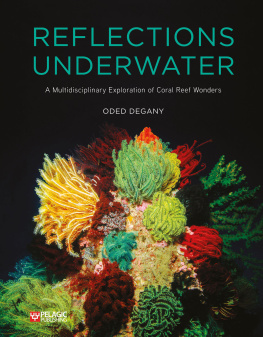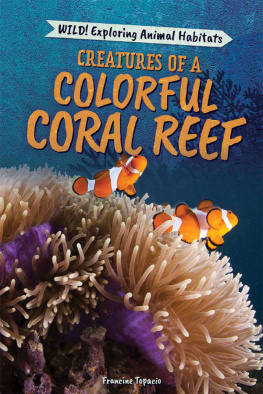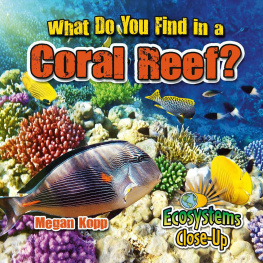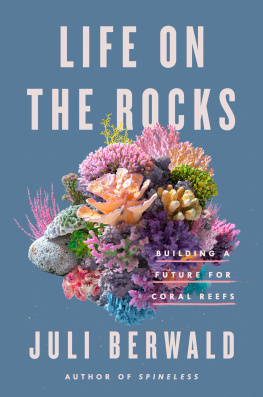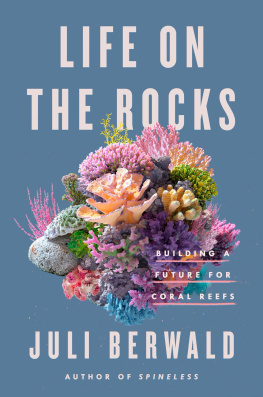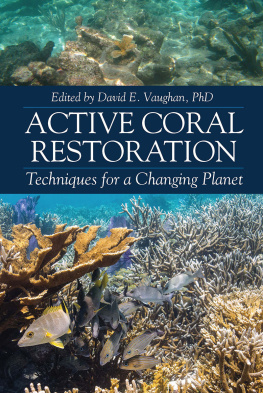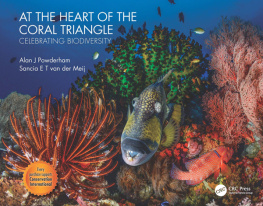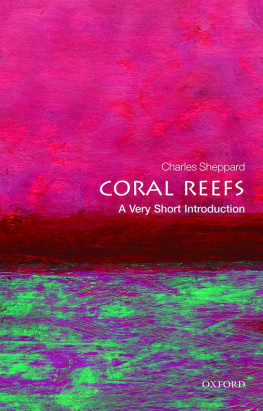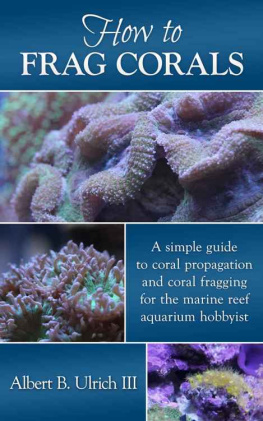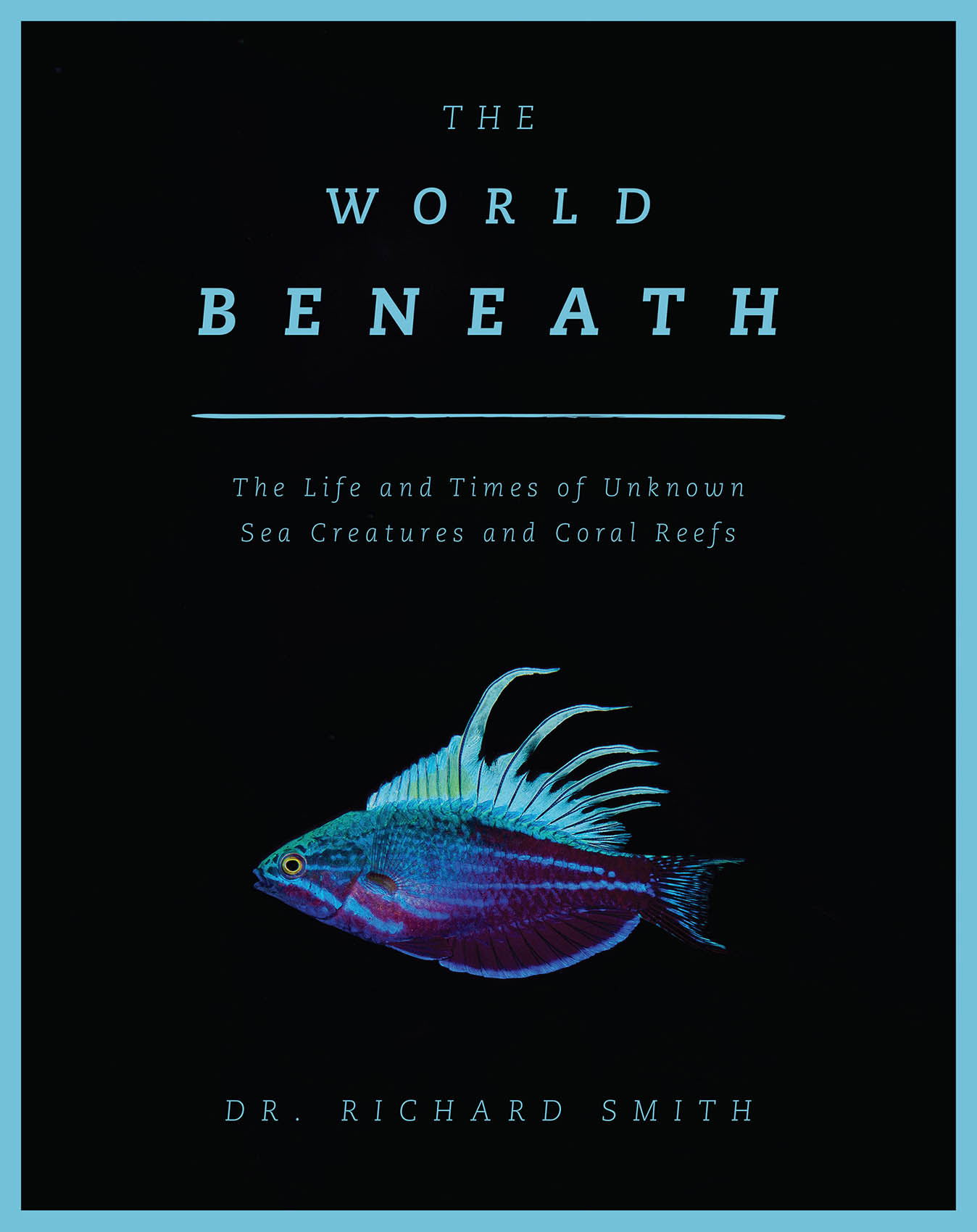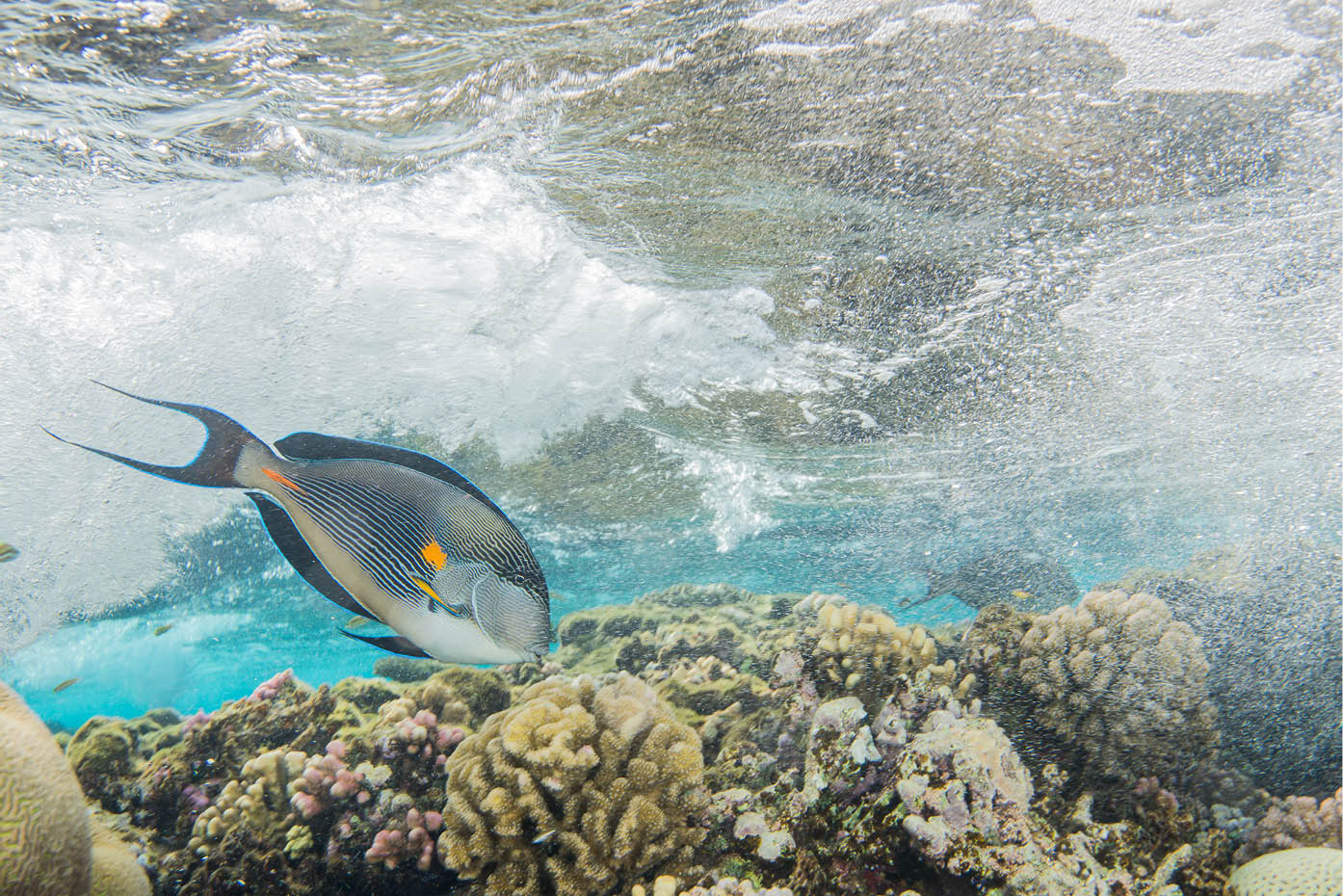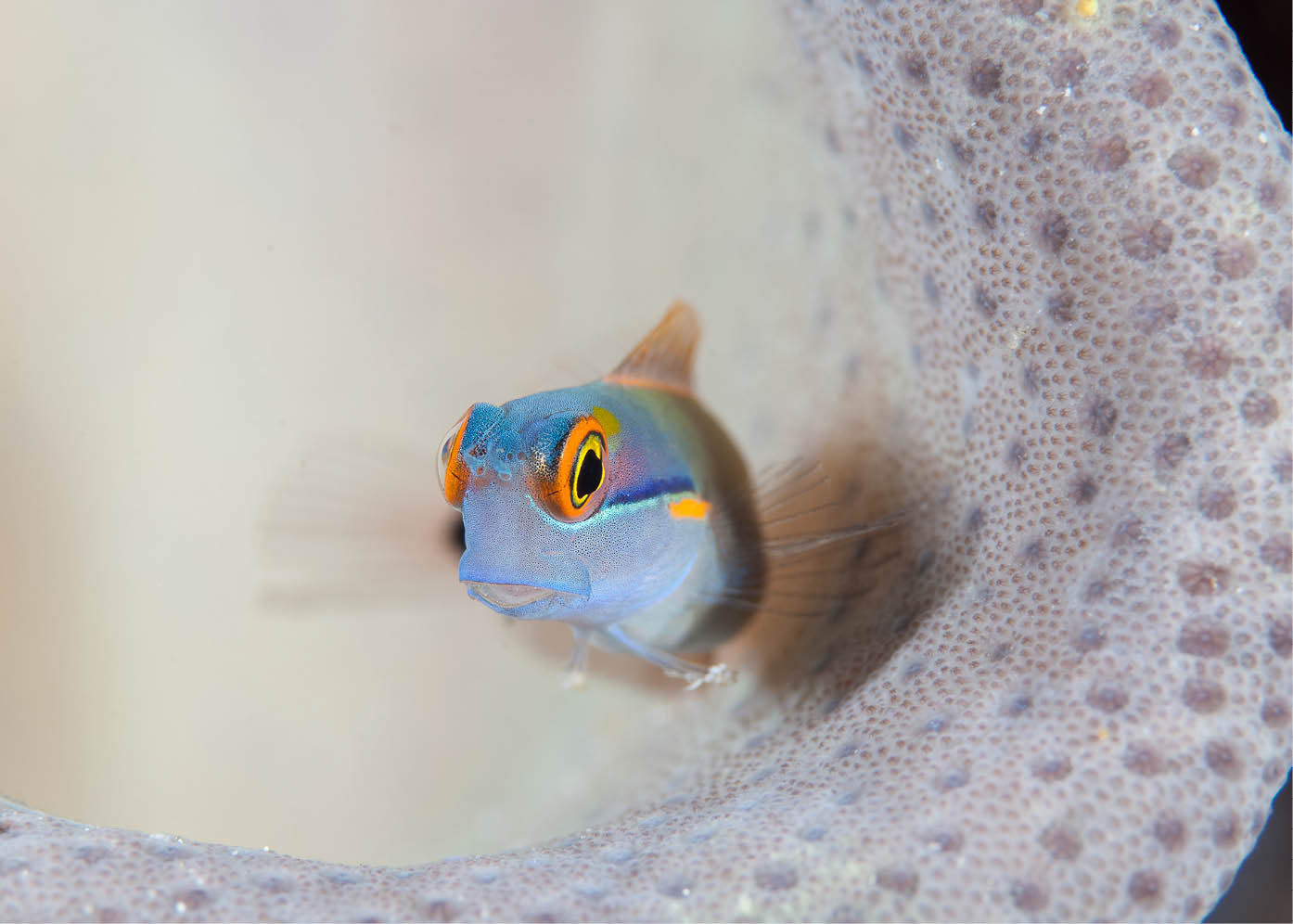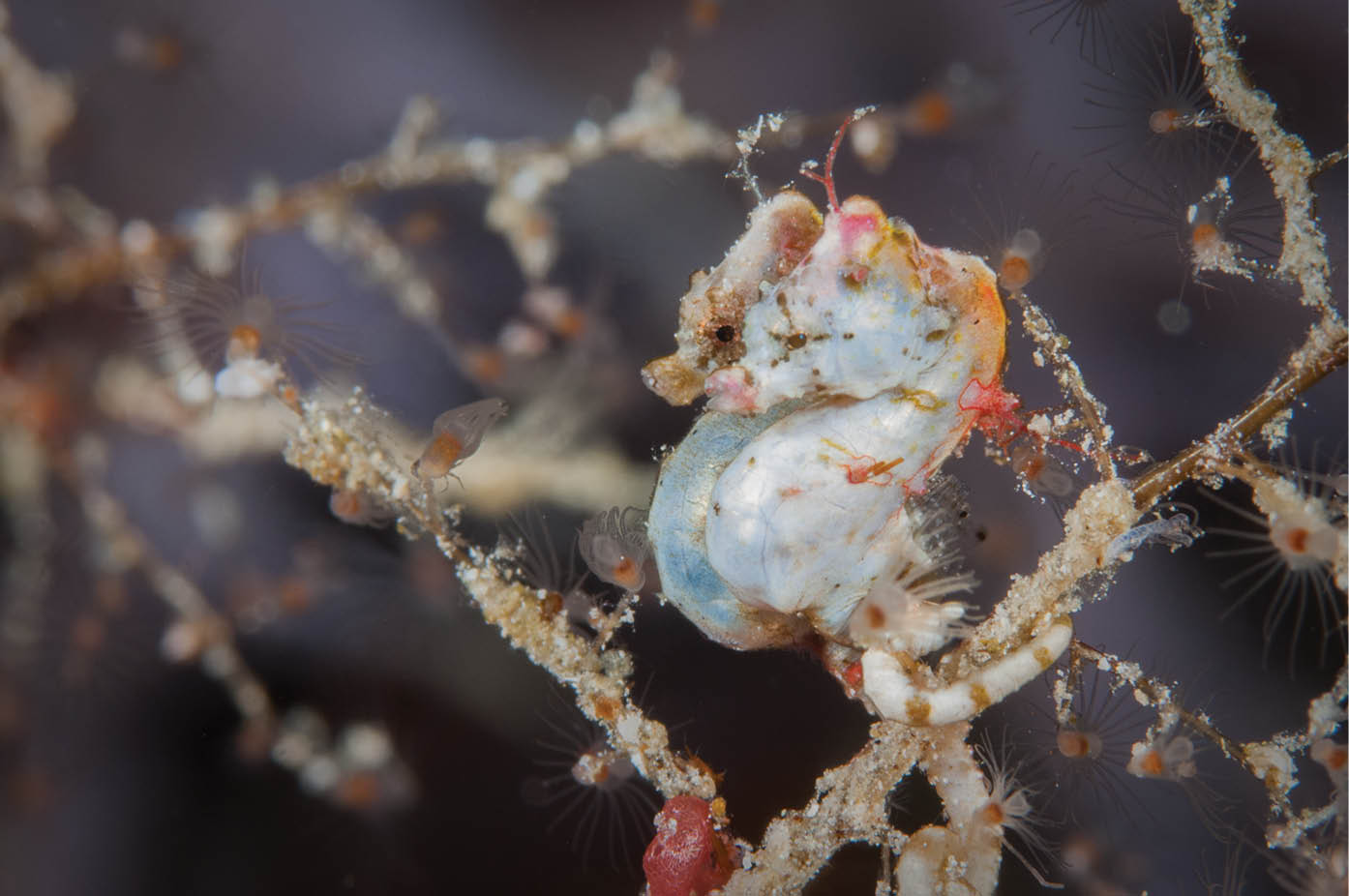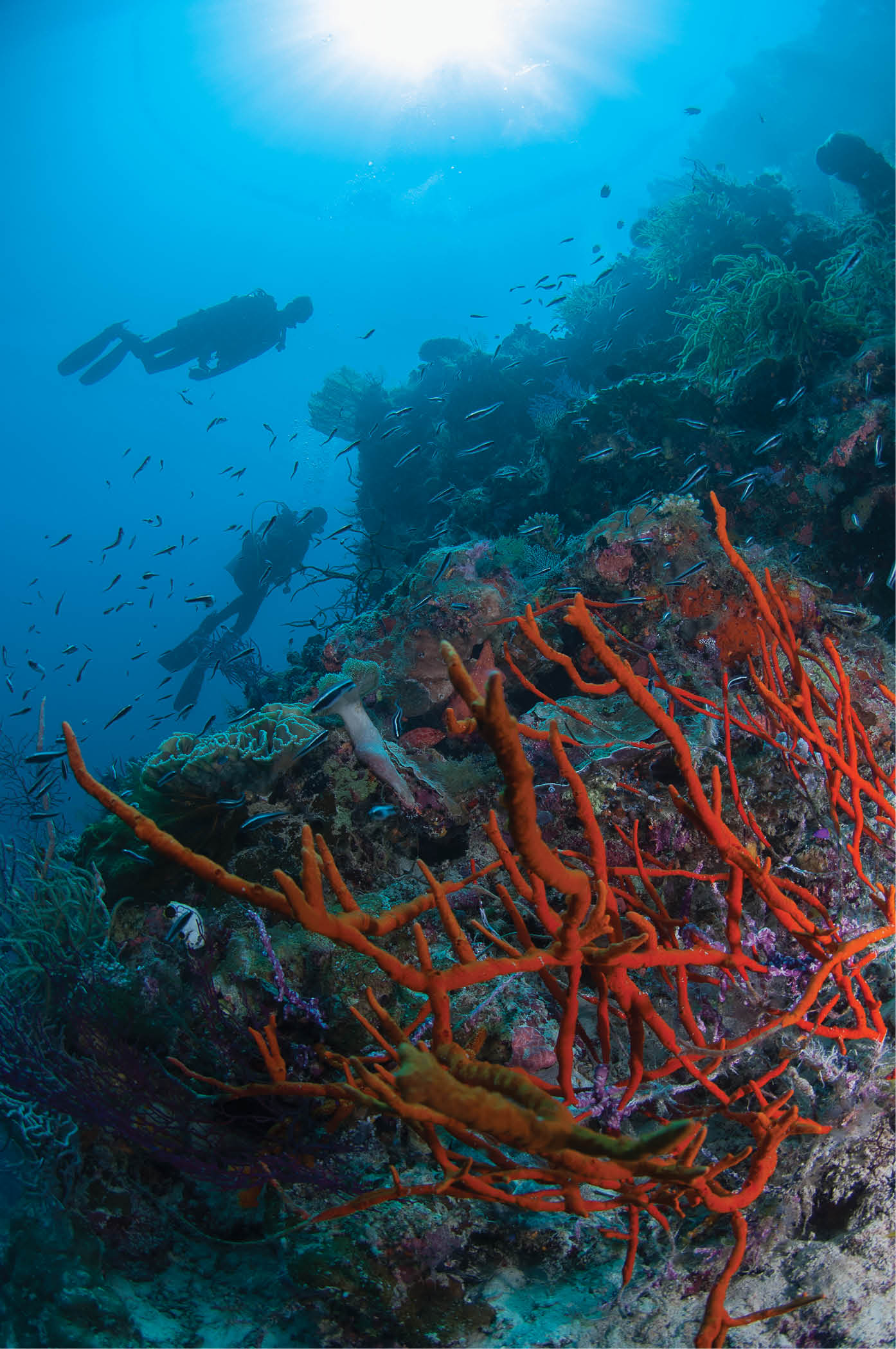Arabian surgeonfish feeding on algae in the surge in the Red Sea Egypt.
The tailspot coralblenny is found only around Raja Ampat and nearby Halmahera Island. Raja Ampat, West Papua, Indonesia.
THE
WORLD
BENEATH

The Life and Times of Unknown Sea Creatures and Coral Reefs
DR. RICHARD SMITH

The World Beneath: The Life and Times of Unknown Sea Creatures and Coral Reefs
Copyright 2019 by Dr. Richard Smith
All rights reserved. No part of this book may be used or reproduced in any manner whatsoever without the written permission of the publisher, except in the case of brief excerpts in critical reviews or articles. All inquiries should be sent by email to Apollo Publishers at info@apollopublishers.com.
Apollo Publishers books may be purchased for educational, business, or sales promotional use. Special editions may be made available upon request. For details, contact Apollo Publishers at info@apollopublishers.com.
Visit our website at www.apollopublishers.com.
Library of Congress Cataloging-in-Publication Data is available on file.
Print ISBN: 978-1-948062-22-0 Ebook ISBN: 978-1-948062-23-7
Printed in the United States of America.
For my father.
Pair of courting Pontohs pygmy seahorses, described in 2008 . Wakatobi, Southeast Sulawesi, Indonesia..
Contents
Chapter :
Diving In
I n the declining early evening light forty-five feet beneath the surface on a remote Indonesian coral reef, a tiny seahorse strangles another with its tail. Just three-quarters of an inch long, the diameter of a one-cent coin, and perfectly camouflaged against the windshield-sized fan-like gorgonian coral they inhabit, these creatures have a penchant for the dramatic. For my PhD research I spent six months watching and recording the antics of these mysterious and diminutive fish, collecting data on their biology and conservationthe first recorded observations of their social and reproductive behaviors. Denises pygmy seahorses had only been recognized by science four years previously, in 2003. Like other behaviors that occur on coral reefs every day, these skirmishes have presumably been happening for millennia. We just didnt know to look for them.
A red sponge and divers. Wakatobi, Sulawesi, Indonesia.
Most of us hear about coral reefs and see them on nature documentaries, but unless were lucky enough to experience such awe-inspiring ecosystems firsthand, it can be hard to appreciate their intricacies. Exploring a tropical rain forest, you drip with sweat in a supersaturated and oppressive atmosphere waiting to spot an animal. A bird might call in the distance, the insect at your feet might unleash its high-pitched whine, and, perhaps, if youre very lucky, and extremely patient, something larger might barrel toward you from the undergrowth. On a healthy coral reef, you can glimpse activity and life wherever you happen to look. Dozens of fish busy themselves with their daily commutes and travails.
In one hour on an Indonesian reef you will likely see over one hundred multihued and multiform species of fishes, if not double thatscrupulous cleaners, eccentric lovers, steadfast parents. The nervous cometfish pokes its marionette of a tail out of a hole, attempting to convince you its a menacing moray eel. Inches from your mask, a small but assertive damselfish warns you not to swim any closer to its precious algal farm. You may not know the names of all of them, but you are mesmerized: immersed in the hustle and bustle of their daily rituals.
Coral reefs continue to surprise and delight. My work has taken me all over the globe and introduced me to coral reefs in twenty-three countries. I have seen fish that wouldnt even stretch across a dime and others that are longer than two London buses. I have seen vibrant and bustling coral gardens that stretch as far as the eye can see and I have captured the first photograph of creatures that have never before been pictured alive. Elsewhere in the ocean, I have come face to face with a warty file snake deep among the roots of a mangrove forest in Indonesia, photographed animals and behaviors in Japan that were still unknown to science, and spent hours scouring an algal-covered rock face to find an unnamed relative of the seahorse in New Zealand. My aim in this book is to share some of my passion and wonder for coral reefs and the astounding variety of creatures that call them home, while allowing those who arent lucky enough to experience this wonderful ecosystem firsthand a window under the waves.
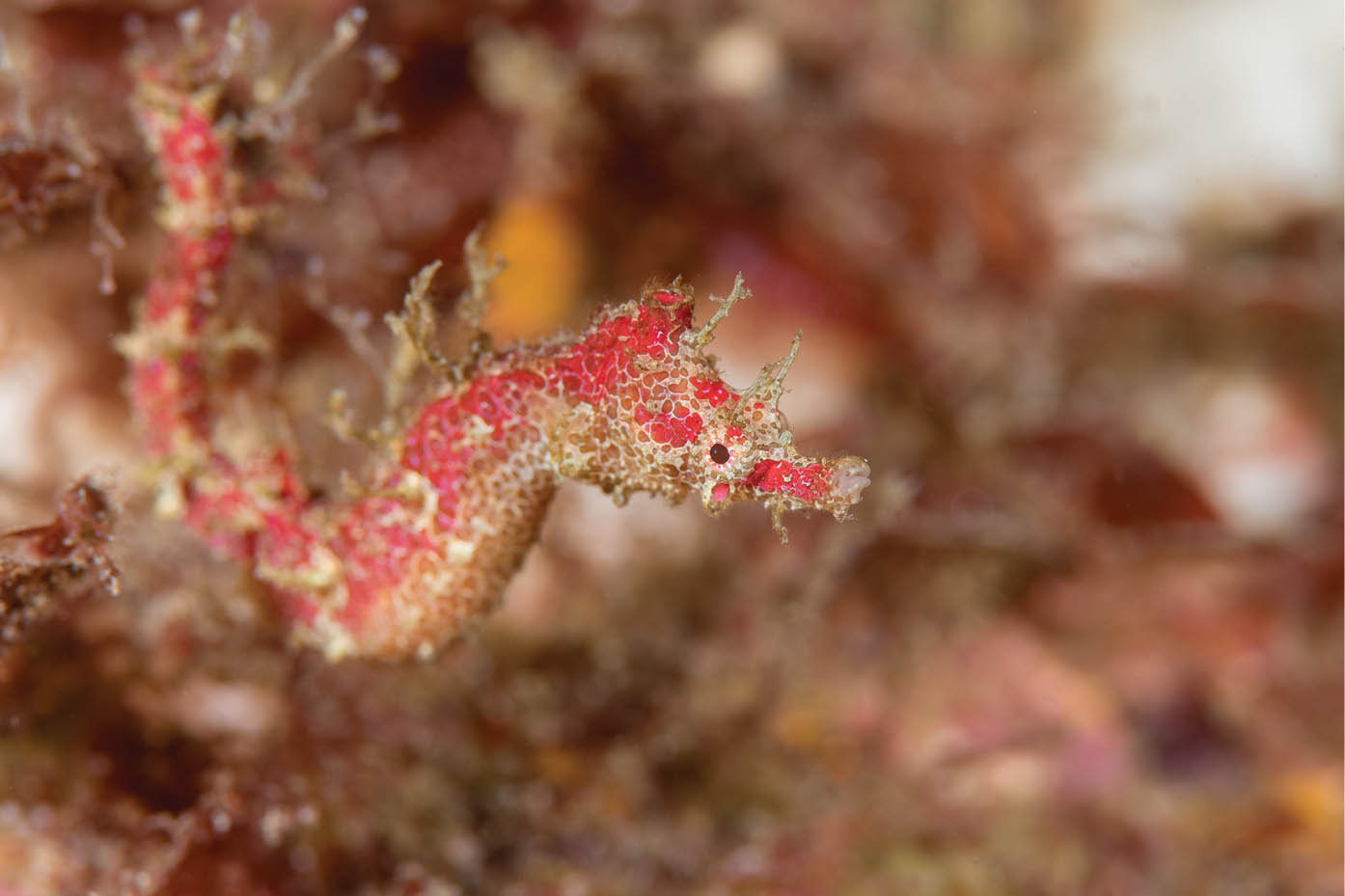
Undescribed species of pygmy pipehorse from New Zealand. Northland, North Island, New Zealand.
For a long time, coral reefs have fascinated mankind. Charles Darwin mused about how these eclectic ecosystems could flourish in crystal-clear tropical waters where there are next to no nutrients to fuel their growth. Today we hear about them in the newsoften, articles bemoaning their loss due to devastating coral bleaching. When corals become stressed by environmental changes, such as warmer waters, they expel their symbiotic intracellular algae, leaving them ghostly white in appearance. Coral bleaching has killed millions of corals over the past two decades. Children learn about coral reefs as well, namely through the popular (though scientifically free-willed) animated coming-of-age film, Finding Nemo . I credit the film for this even though its makers didnt include some of the most fascinating aspects of anemonefish biology in the story line. If the film were true to life then after the untimely death of Nemos mother, his father would have transitioned into a female and another sexually reproductive male would have taken his place.
The reef is a biological powerhouse, full of fantastical creatures with amazing stories to be told. For my godson Joeys birthday, I made a huge print of an untouched coral reef vista that I took in West Papua, Indonesia, to put on his bedroom wall. When I was a child in a rural British village, I spent hours poring over a map of the globe on my friends wall; this had a profound effect on my view of the world. I hoped I might inspire Joey, the way I was inspired, that I might foster within him a wonder of the natural world. With so many kids growing up without a tangible connection to nature, it is ever more important for us to celebrate its splendor.
For those lucky enough to dive or snorkel on a coral reef, the first time is as overwhelming as it is memorable. Imagine the European explorers as they came across the first coral reefs. As early natural historians and biologists began to explore coral reefs, they would have been struck by the stark differences between Caribbean, Red Sea, and Indo-Pacific reefs and the temperate Atlantic and Mediterranean ecosystems they were used to. Initially, of course, the extent of an explorers interest in coral reefs lay in the reefs ability to wreck their vessels. Despite all the modern technology that we now possess, there are still unchartered waters that can scuttle ships. Only a few years ago, I was on a boat that narrowly avoided disaster after encountering an unchartered reef in a remote corner of Papua. I looked over the side of the ship and could clearly see the tiny damselfish on the reef below; they were so close.


